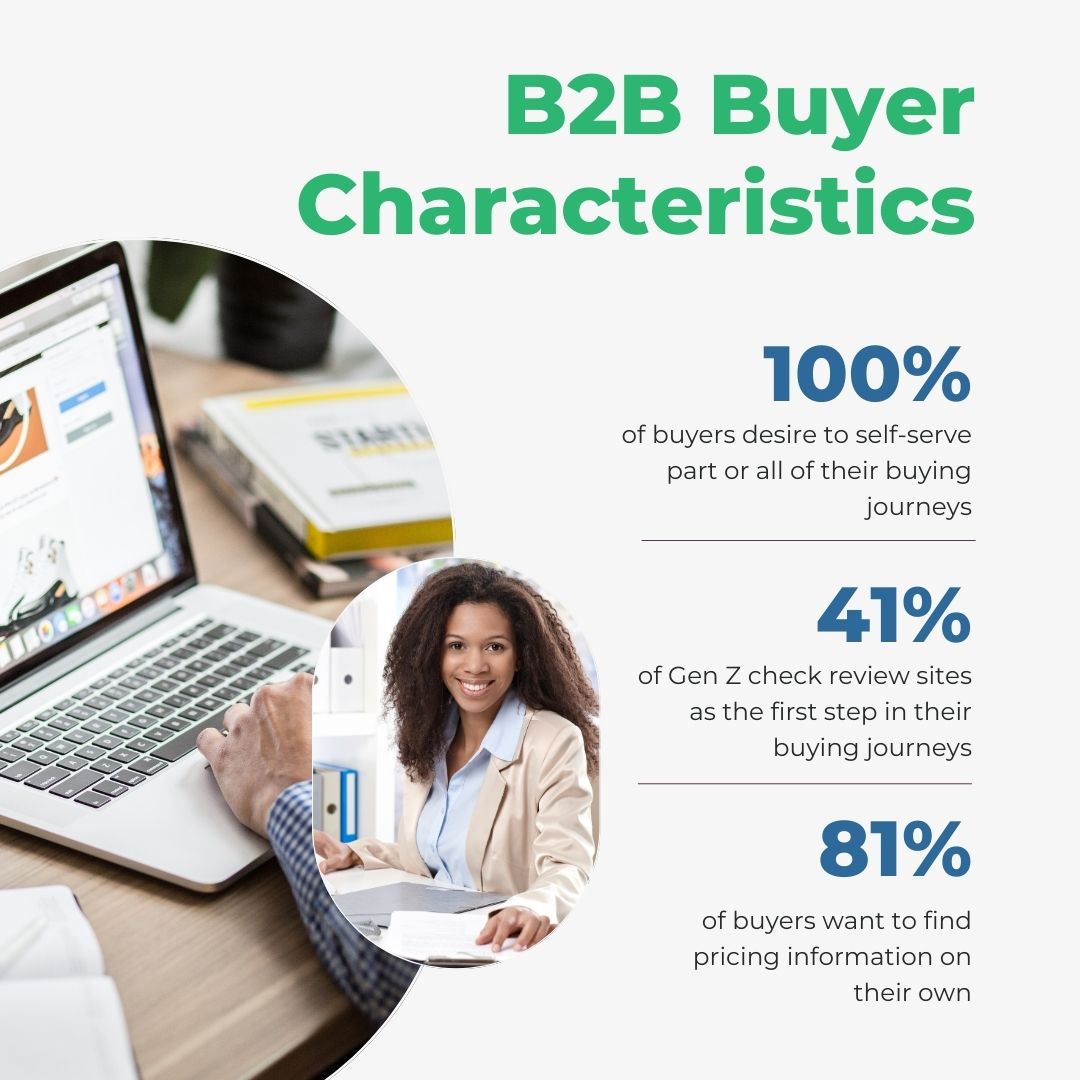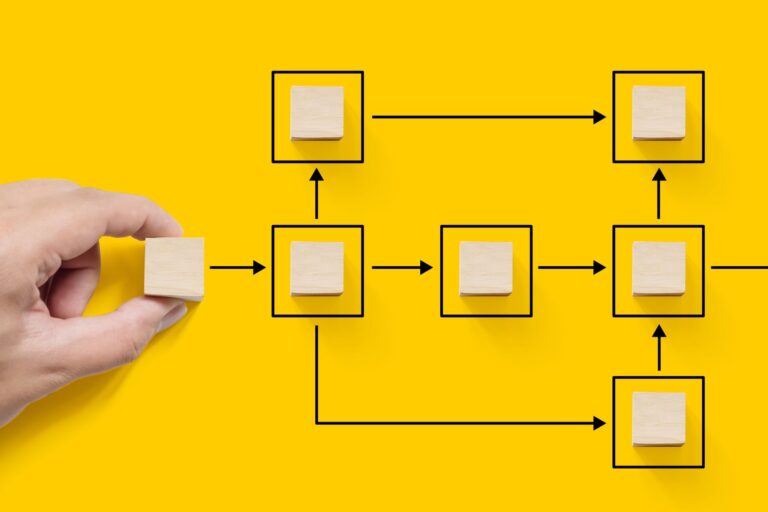A common refrain is being heard from revenue teams across the B2B space — Where have all the inbound leads gone?
Inbound is usually the first of go-to-market (GTM) motions for a company. It starts with their website. If an organization creates the right type of valued content and custom, personalized experiences, site visitors — and, in time, prospective customers — flock to them. An effective inbound motion is the ante to get into the competitive marketplace.
Lately, however, the inbound sales pipeline has shrunk for a great many sales and marketing organizations. Partly because the challenging economic environment has pushed many companies to delay further investment, contributing to a decline in inbound.
But, the shrinking inbound motion is also a proof point that B2B buyers behave markedly different than just a few years ago. Their new B2B buying journeys are forcing vendors to change almost everything they thought they knew about successful GTM strategies.

There’s a New B2B Buyer
Over 50 percent of the U.S. workforce is made up of millennials and Gen Z. These professionals have grown up with search engines, peer review sites and ever-present social media.
In their personal lives, they are buyers who have become accustomed to world-class B2C buying experiences.
- They’re used to convenience, easy-to-find product information like pricing, and peer-to-peer reviews.
- They’re digital-first buyers in their personal lives. As a result, they’re bringing those same behaviors to professional lives.
- They’ve shown a determined preference to embark on anonymous buying journeys.
- They often defer, or avoid completely, engaging with sellers.
B2B Buyers Embrace New B2B Buying Journeys
In June of 2022, TrustRadius published its 6th annual B2B Buying Disconnect report based on a survey of 2,185 technology buyers. Its key findings are enough to shake a revenue team’s belief in its established strategies and processes to the core. Consider the following takeaways from the report:
- Virtually 100 percent of buyers desire to self-serve part or all of their buying journeys, up 13 percent from 2021
- Forty-one percent of Gen Z and 29 percent of millennials selected “Check review sites” as the first step in their buying journeys
- The top three items buyers want potential vendors to provide as self-serve options are 1) software pricing (71 percent), 2) demos or free trials (70 percent), and 3) customer reviews (35 percent)
- Eighty-one percent of buyers want to find pricing information on their own, and 16 percent will eliminate a potential vendor from their short list for not including transparent pricing information online
- Forty percent of buyers named “having to contact sales for a demo or free trial” among the three things potential vendors do to make them less likely to buy
- Cold calling was named by buyers as the number one reason (64 percent) they are less likely to buy a product from a potential vendor
How do the above findings mesh with most organizations’ GTM models? In a great many cases, they don’t.
Increasingly, fitting buying journeys into legacy GTM processes becomes an exercise in trying to force a square peg into a round hole.

Changing Buying Journeys Force a New B2B GTM Paradigm
Today’s B2B buying journeys pressure test the sales and marketing models of the past, and in doing so, they’ve exposed a number of weaknesses. Arguably, the biggest weakness is the way revenue teams manage leads, contacts and accounts.
In the past and even today, revenue teams looked to get leads into the hands of sellers as quickly as possible. It’s what the business wanted. It made the revenue team feel more proactively accountable.
In addition, buyers used to not have much choice. In many ways, their buying journeys were dictated by sellers. However, they never much embraced the process.
Need a proof point? What’s the conversion rate of your best landing page form fill?
According to Impact, the median conversion rate is between 2.3 and 5.5 percent. But, hey, that’s median. How about the top performers, the best of the best? For them, it’s 11.5 percent.
Let’s look at those statistics from the B2B buyers’ perspective. In the best of cases, 88 percent of visitors decided to discontinue their journeys because they didn’t want to provide their contact information.
Simply, the vast majority of B2B buyers don’t want to be contacted by email or phone unless it’s on their own terms, on their timeline.
From Lead Generation to Demand Generation
B2B buyers now defer speaking to sales representatives until they are fully prepared to buy. Whereas they used to be forced to interact with sellers relatively early in their buying journeys. Now they’re deep into the Intent, Evaluation and Purchasing phases before they talk to a seller. Some buyers are so interested in remaining anonymous that they use cloaking solutions like TestBox to complete their entire journey.
This requires the Marketing team to nurture and facilitate buyers down their buying journeys long before handing them over to Sales. Inbound hasn’t gone away. Rather, inbound arrives much later in the buying journey than previously.
In many ways, the difference between yesteryear and now can be viewed as the difference between lead generation and demand generation.
How Revenue Teams Can Adjust to Declining and/or Delayed Inbound Leads
Revenue teams can’t simply shrug off a declining or delayed inbound GTM motion. They’re tasked with growth, and if inbound isn’t carrying its weight, then overall strategies have to be adjusted to compensate. However, it’s not just as simple as ramping up outbound motions.
Revenue teams need to meet B2B buyers along their buying journeys. They need to provide the information buyers need at the time when buyers need it. Their role is now to help guide and facilitate their journeys. Doing so requires combining inbound and outbound motions to benefit the prospective customer.
It’s a mind shift for many roles in the revenue team. Marketers now need to be informational resources, much like librarians, guiding buyers to the information they need to make buying decisions. Sellers need to become buying agents, representing buyers and solving for their customers’ best interests.
Shrinking inbound sales pipelines are a real concern. But, for those best-in-class products and solutions, customer demand is still present. The key is to build demand through trusting relationships between brand and customers that advance the customers’ objectives.









